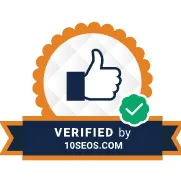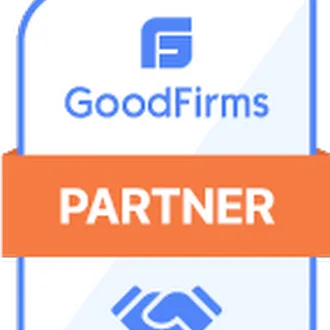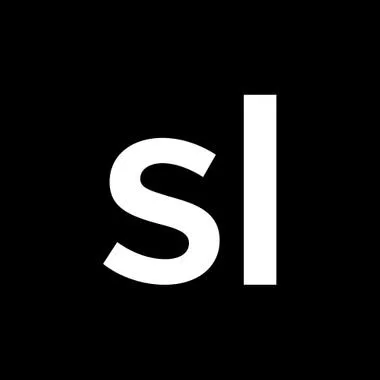Introduction
In software solutions, you often encounter two main types: custom software and off-the-shelf software. Off-the-shelf software refers to pre-made applications designed for various users and purposes.
Unlike custom software, which is tailored specifically for one organization’s needs, off-the-shelf software is developed with general requirements in mind and is available for immediate purchase and use.
Popular examples include Microsoft Office, Adobe Photoshop, and QuickBooks.
What Is Off-the-Shelf Software?
Off-the-shelf software is like buying a pre-packaged product from a store. It’s ready to use immediately, with no need for development time or customization.
Companies design these programs to serve a broad audience, making them versatile for various applications but not necessarily perfect for any specific use case.
Developers and software companies invest significant resources into creating these products, ensuring they are robust, feature-rich, and capable of meeting the needs of as many users as possible.
This broad focus means that while the software can be extremely useful, it might not meet every specific need of a business or individual without some adjustments.
Advantages of Off-the-Shelf Software
- Cost-Effective Upfront
- Immediate Availability
- Reliability and Support
- Feature-Rich
Cost-Effective Upfront
One of the primary advantages of off-the-shelf software is its cost-effectiveness. Because the development costs are spread across a large number of users, the price you pay is significantly lower than the cost of developing custom software from scratch.
You can often find a solution that fits within your budget without compromising on quality.
Immediate Availability
Off-the-shelf software is ready to use right out of the box. There is no need to wait for the development process to be completed, which can take months or even years in the case of custom software.
You can purchase the software, install it, and start using it almost immediately, which is a huge advantage for businesses needing a quick solution.
Reliability and Support
Because off-the-shelf software is used by many users, it undergoes rigorous testing and refinement. This means you’re getting a product that is generally stable and reliable.
Moreover, reputable software companies provide regular updates, patches, and customer support, ensuring that any bugs or issues are promptly addressed.
Feature-Rich
These solutions often come packed with a wide array of features. While you might not use all of them immediately, having access to a broad set of tools can be beneficial as your needs evolve.
This versatility makes off-the-shelf software a good choice for businesses looking for comprehensive solutions.
Disadvantages of Off-the-Shelf Software
- Limited Customization
- Potential for Bloatware
- Security Risks
- Licensing Costs
Limited Customization
The most significant drawback of off-the-shelf software is its limited customization options. Since these products are designed to serve a broad audience, they may not fit your specific business processes perfectly.
You might need to adjust your workflows to match the software’s capabilities, which can lead to inefficiencies.
Potential for Bloatware
Because off-the-shelf software is designed to cater to many users, it often includes a plethora of features that you might not need. This can make the software more complicated and slower than necessary, as these extra features take up space and resources.
Security Risks
Widely used software can be a bigger target for hackers. The more popular a software product is, the more attractive it becomes to cybercriminals looking to exploit vulnerabilities.
While reputable companies invest heavily in security, the widespread use of these products means they are more likely to be targeted.
Licensing Costs
While the initial cost might be lower, off-the-shelf software often has ongoing licensing fees, especially for enterprise solutions. These recurring costs can add up over time, making the total cost of ownership higher than initially anticipated.
Detailed Comparison: Off-the-Shelf vs. Custom Software
Cost
Off-the-Shelf:
- Lower initial cost
- Recurring licensing fees
- Potential hidden costs for premium features or add-ons
Custom Software:
- Higher initial development cost
- No recurring licensing fees
- Long-term cost savings through tailored efficiency and scalability
Development Time
Off-the-Shelf:
- Immediate availability
- No waiting period
Custom Software:
- Development time can range from a few months to over a year
- Requires detailed planning and iteration
Customization
Off-the-Shelf:
- Limited customization options
- May need to adapt business processes to fit the software
Custom Software:
- Fully customizable to fit specific business needs
- Flexibility to evolve with changing requirements
Security
Off-the-Shelf:
- Higher risk of being targeted by hackers due to widespread use
- Regular updates and patches provided by the vendor
Custom Software:
- Lower profile, less likely to be targeted
- Custom security measures tailored to specific threats
Scalability
Off-the-Shelf:
- Generally scalable to a certain extent
- May encounter limitations as the business grows
Custom Software:
- Designed with scalability in mind
- Easier to modify and expand as needed
Support and Maintenance
Off-the-Shelf:
- Vendor-provided support through various channels
- Regular updates and patches
Custom Software:
- Direct support from the development team
- Tailored maintenance and updates based on specific needs
Real-Life Applications of Off-the-Shelf Software
Microsoft Office Suite
Microsoft Office, including Word, Excel, and PowerPoint, is a quintessential example of this product. It provides a range of tools for document creation, data analysis, and presentations that cater to both personal and professional users.
Adobe Creative Cloud
Adobe’s suite of creative tools, including Photoshop, Illustrator, and Premiere Pro, offers powerful features for graphic design, video editing, and digital art. These tools are widely used by professionals in various creative industries.
QuickBooks
QuickBooks is an accounting software designed for small to medium-sized businesses. It offers tools for managing finances, tracking sales and expenses, and generating reports. Its ease of use and comprehensive features make it a popular choice among business owners.
Choosing the Right Off-the-Shelf Software
When selecting this software option, it’s crucial to conduct thorough research to ensure the solution meets your specific needs. Here are some steps to guide you:
- Identify Your Needs
- Set a Budget
- Read Reviews
- Evaluate Support Options
- Test the Software
- Assess Scalability
Identify Your Needs
Make a list of the essential features and functions you require. Consider your business processes and how the software will integrate with your existing systems.
Set a Budget
Determine how much you are willing to spend on the software, including any recurring licensing fees. Consider the long-term costs as well as the initial purchase price.
Read Reviews
Look for reviews and testimonials from other users. Pay attention to common pros and cons mentioned by reviewers, and consider how these points align with your requirements.
Evaluate Support Options
Ensure the software vendor offers adequate support. Check the available support channels and the quality of service provided. Reliable support is crucial for resolving issues promptly.
Test the Software
If possible, take advantage of free trials or demos. Testing the software in your own environment will give you a better understanding of its usability and compatibility with your existing systems.
Consider Integration
Ensure the software can integrate with other tools and platforms you use. Seamless integration can save time and reduce the risk of errors.
Assess Scalability
Think about your future needs and how the software will scale as your business grows. Choose a solution that can accommodate your long-term goals.
Key Takeaway
Off-the-shelf software offers a practical, cost-effective solution for many businesses and individuals. Its immediate availability, reliability, and comprehensive features make it an attractive option for those needing quick and robust tools.
However, the limitations in customization, potential security risks, and ongoing licensing costs are important factors to consider.
You can make an informed decision that best suits your requirements by carefully evaluating your needs, budget, and the specific features of the software,
FAQs About Off-the-shelf Software
What is off-the-shelf software?
Off-the-shelf software is pre-made software designed for a wide range of users and purposes. Companies create and sell it to the general public, making it ready for immediate use.
Why should I choose off-the-shelf software?
Choose it if you need a cost-effective, immediately available solution that comes with a range of features and reliable support.
Is off-the-shelf software customizable?
Typically, off-the-shelf software offers limited customization. You might be able to adjust settings or add plugins, but you can’t change the core functionality to fit your exact needs.
How does off-the-shelf software handle updates?
The software provider handles updates, regularly releasing patches and new versions. This ensures the software stays up-to-date with the latest features and security fixes.
What are the security implications of using off-the-shelf software?
While reputable off-the-shelf software comes with security measures, its widespread use makes it a common target for hackers. Ensure you keep it updated and follow best security practices.
Can off-the-shelf software integrate with my existing systems?
Many off-the-shelf solutions offer integration options with other popular software. However, it may not integrate as seamlessly as a custom solution designed specifically for your IT environment.
What should I consider when choosing off-the-shelf software?
Consider your specific needs, budget, and the features offered by the software. Check reviews and look for a solution that offers good customer support and regular updates.
Is off-the-shelf software scalable?
Most off-the-shelf software is designed to be scalable to some extent, but it might not scale as efficiently as a custom solution designed with your future growth in mind.
Can off-the-shelf software be used across different platforms?
Many of its solutions are designed to be cross-platform, meaning they can be used on various operating systems like Windows, macOS, and sometimes Linux.
How do I get support for off-the-shelf software?
Support is usually provided by the software vendor through various channels like email, phone, online chat, or support forums. Check the level of support included with your purchase.










